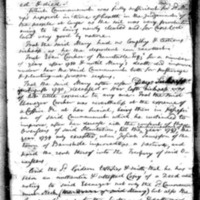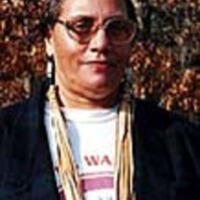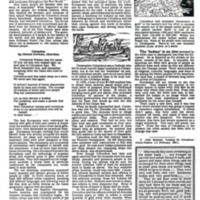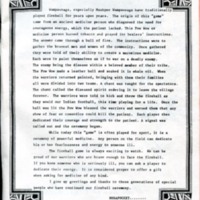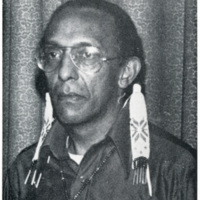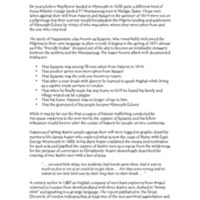Wampanoag
Title
Wampanoag
Description
Traditional Wampanoag territory encompasses a wide swath of southern New England--much of what is now southeastern Massachusetts, including Martha's Vineyard and Nantucket. Today, there are two federally recognized communities: one at Mashpee, Cape Cod; the other at Aquinnah (Gay Head), Martha's Vineyard. Wampanoag people were among the first indigenous people regionally to begin writing and published a Wampanoag-language bible as early as 1663--a text that has been useful in contemporary language revival efforts. Wampanoag people have also been devoted writers of their own history, as evidenced by the detailed timelines that appear even on the official tribal websites.
Resources
Mashpee Wampanoag Tribe
Wampanoag Tribe of Gay Head (Aquinnah)
Wopanaak Language Reclamation Project
Resources
Mashpee Wampanoag Tribe
Wampanoag Tribe of Gay Head (Aquinnah)
Wopanaak Language Reclamation Project
Collection Items
"Deposition" (1797) by Sarah Keetoh and Hannah Babcock
“In 1789 Mashpee women Amy Simon and Mary Sunkoson complained to the overseers that they were being denied necessities that were supposed to be supplied through their common fund.” A year prior, the Mashpee had lost their independence and in turn…
Joan Tavares Avant
Joan Tavares Avant is a Mashpee Wampanoag elder, historian, and writer who works to promote an accurate representation of her Mashpee Wampanoag culture and heritage.
Family
From the day of her birth on April 14, 1940 until today, Joan Tavares Avant…
Linda Coombs
Linda Coombs* is program director of the Aquinnah Cultural Center. She is an author and historian from the Wampanoag Tribe of Gay Head (Aquinnah).
Life & Career
Born and raised in Martha's Vineyard, Coombs lives with her family in the Wampanoag…
"Mashpee's Identity" by Joan Tavares Avant
Avant wrote this piece during her tenure as President of the Mashpee Wampanoag Tribal Council and Director of Mashpee's Indian Education Program. The piece appeared in the Mashpee powwow flyer, an important source of Wampanoag writing and…
"An Indian Side of the Christopher Columbus Story" by Joan Tavares Avant
Avant has had a long career as a columnist for area newspapers. This article survives in her personal collections as a clipping; it may have appeared in The Mashpee Enterprise, to which she was a frequent contributor. The year is unknown. The article…
"The Origin of the Fireball Game" (1988/89) by Ramona Peters
Wampanoag artist Ramona Peters wrote this piece for a flyer distributed at the Mashpee powwow in 1988 and 1989. Powwow flyers have been an important source of Mashpee Wampanoag writing and self-representation. This piece, signed "Nosapocket," speaks…
"Maushop Brings His People Home" (2003) by Linda Coombs
An account of a dugout canoe trip from the mainland to Aquinnah, launched by Plimoth Plantation's Wampanoag Indian Program.
"Welcome to Mashpee" by Joan Tavares Avant
Avant wrote this piece while she was President of the Mashpee Wampanoag Tribal Council and Director of Mashpee's Indian Education Program, and published it in the tribe's annual powwow flyer. The Mashpee powwow flyers have been an important source of…
"The Eagles and the Crows" (c. 1972) by Wamsutta (Frank James)
This card comes from an educational kit called "Indians Who Met the Pilgrims," produced by the Boston Children's Museum (BCM) in the early 1970s in collaboration with regional Native educators and activists. Frank James was an Aquinnah Wampanoag…
Introduction to Captured: 1614 by Paula Peters (2014)
Paula Peters is a Native American journalist and educator from Mashpee, Massachusetts. She worked for the Cape Cod Times from 1992-2002 and has worked to educate the public about Native history as part of the Indian Program at Plimoth Plantation…

